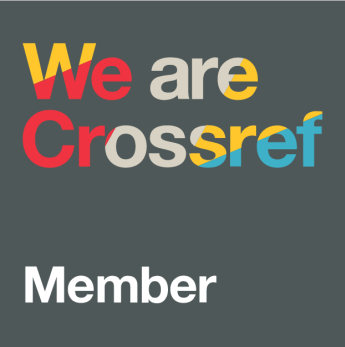Students learning engagement in the flipped classroom: Systematic literature review
Downloads
Abdullah, M. Y., Hussin, S., & Ismail, K. (2019). Investigating the effects of the flipped classroom model on Omani EFL learners' motivation level in English speaking performance. Education and Information Technologies, 24(5), 2975–2995. https://doi.org/10.1007/s10639-019-09911-5
Akí§ayır, G., & Akí§ayır, M. (2018). The flipped classroom: A review of its advantages and challenges. Computers & Education, 126, 334–345. https://doi.org/10.1016/j.compedu.2018.07.021
Alebrahim, F., & Ku, H.-Y. (2020). Perceptions of student engagement in the flipped classroom: A case study. Educational Media International, 57(2), 128–147. https://doi.org/10.1080/09523987.2020.1786776
Al-Emran, M., Shaalan, K., & Hassanien, A. E. (Eds.). (2021). Recent advances in intelligent systems and smart applications. Springer.
Al-Samarraie, H., Shamsuddin, A., & Alzahrani, A. I. (2020). A flipped classroom model in higher education: A review of the evidence across disciplines. Educational Technology Research and Development, 68(3), 1017–1051. https://doi.org/10.1007/s11423-019-09718-8
Antonis, K., Lampsas, P., Katsenos, I., Papadakis, S., & Stamouli, S.-M. (2023). Flipped classroom with teams-based learning in emergency higher education: Methodology and results. Education and Information Technologies, 28(5), 5279–5295.
https://doi.org/10.1007/s10639-022-11339-3
Baig, M. I., & Yadegaridehkordi, E. (2023). Flipped classroom in higher education: A systematic literature review and research challenges. International Journal of Educational Technology in Higher Education, 20(61), 1-26. https://doi.org/10.1186/s41239-023-00430-5
Bates, D., & Ludwig, G. (2020). Flipped classroom in a therapeutic modality course: Students' perspective. Research and Practice in Technology Enhanced Learning, 15(18), 1-15.
https://doi.org/10.1186/s41039-020-00139-3
Bergmann, J., & Sams, A. (2012). Flip your classroom: Reach every student in every class every day. International Society for Technology in Education.
Borit, M., & Stangvaltaite"Mouhat, L. (2020). GoDental! Enhancing flipped classroom experience with game"based learning. European Journal of Dental Education, 24(4), 763–772. https://doi.org/10.1111/eje.12566
Boulton, C. A., Hughes, E., Kent, C., Smith, J. R., & Williams, H. T. P. (2019). Student engagement and wellbeing over time at a higher education institution. PLOS ONE, 14(11), 1-20. https://doi.org/10.1371/journal.pone.0225770
Burkhart, S. J., Taylor, J. A., Kynn, M., Craven, D. L., & Swanepoel, L. C. (2020). Undergraduate students experience of nutrition education using the flipped classroom approach: A descriptive cohort study. Journal of Nutrition Education and Behavior, 52(4), 394–400. https://doi.org/10.1016/j.jneb.2019.06.002
Chakraborty, M., & Nafukho, F. M. (2014). Strengthening student engagement: What do students want in online courses? European Journal of Training and Development, 38(9), 782–802. https://doi.org/10.1108/EJTD-11-2013-0123
Chen, M. A., Hwang, G., & Chang, Y. (2019). A reflective thinking"promoting approach to enhancing graduate students' flipped learning engagement, participation behaviors, reflective thinking and project learning outcomes. British Journal of Educational Technology, 50(5), 2288–2307. https://doi.org/10.1111/bjet.12823
Cole, P. G., & Chan, L. K. S. (1994). Teaching Principles and Practice. Prentice Hall.
Czaplinski, I., & Fielding, A. L. (2020). Developing a contextualised blended learning framework to enhance medical physics student learning and engagement. Physica Medica, 72, 22–29. https://doi.org/10.1016/j.ejmp.2020.03.010
Dixson, M. D. (2015). Measuring student engagement in the online course: The online student engagement scale (OSE). Online Learning, 19(4), 1–15. https://doi.org/10.24059/olj.v19i4.561
Doo, M. Y., & Bonk, C. J. (2020). The effects of self"efficacy, self-regulation and social presence on learning engagement in a large university class using flipped Learning. Journal of Computer Assisted Learning, 36(6), 997–1010. https://doi.org/10.1111/jcal.12455
Durrani, U. K., Al Naymat, G., Ayoubi, R. M., Kamal, M. M., & Hussain, H. (2022). Gamified flipped classroom versus traditional classroom learning: Which approach is more efficient in business education? The International Journal of Management Education, 20(1), 100595. https://doi.org/10.1016/j.ijme.2021.100595
Elmaadaway, M. A. N. (2018). The effects of a flipped classroom approach on class engagement and skill performance in a Blackboard course. British Journal of Educational Technology, 49(3), 479–491. https://doi.org/10.1111/bjet.12553
Fang, J., Vong, J., & Fang, J. (2022). Exploring student engagement in fully flipped classroom pedagogy: Case of an Australian business undergraduate degree. Journal of Education for Business, 97(2), 76–85. https://doi.org/10.1080/08832323.2021.1890539
Gonda, D., PavloviÄová, G., Tirpáková, A., & ÄŽuriÅ¡, V. (2021). Setting Up a Flipped Classroom Design to Reduce Student Academic Procrastination. Sustainability, 13(15), 8668. https://doi.org/10.3390/su13158668
Gu, J., Tang, L., Liu, X., & Xu, J. (2022). Promoting pre-service teacher students' learning engagement: Design-based research in a flipped classroom. Frontiers in Psychology, 13, 810275. https://doi.org/10.3389/fpsyg.2022.810275
Guo, J. (2019). The use of an extended flipped classroom model in improving students' learning in an undergraduate course. Journal of Computing in Higher Education, 31(2), 362–390. https://doi.org/10.1007/s12528-019-09224-z
Ha, A. S., O'Reilly, J., Ng, J. Y. Y., & Zhang, J. H. (2019). Evaluating the flipped classroom approach in Asian higher education: Perspectives from students and teachers. Cogent Education, 6(1), 1638147. https://doi.org/10.1080/2331186X.2019.1638147
Hava, K. (2021). The effects of the flipped classroom on deep learning strategies and engagement at the undergraduate level. Participatory Educational Research, 8(1), 379–394. https://doi.org/10.17275/per.21.22.8.1
He, J. (2020). Construction of "three-stage asynchronous" instructional mode of blended flipped classroom based on Mobile learning platform. Education and Information Technologies, 25(6), 4915–4936. https://doi.org/10.1007/s10639-020-10200-9
Ho, J. (2020). Gamifying the flipped classroom: How to motivate Chinese ESL learners? Innovation in Language Learning and Teaching, 14(5), 421–435. https://doi.org/10.1080/17501229.2019.1614185
Howell, R. A. (2021). Engaging students in education for sustainable development: The benefits of active learning, reflective practices and flipped classroom pedagogies. Journal of Cleaner Production, 325, 1-22. https://doi.org/10.1016/j.jclepro.2021.129318
Hung, H.-T. (2015). Flipping the classroom for English language learners to foster active learning. Computer Assisted Language Learning, 28(1), 81–96. https://doi.org/10.1080/09588221.2014.967701
Hussain, S., Jamwal, P. K., Munir, M. T., & Zuyeva, A. (2020). A quasi-qualitative analysis of flipped classroom implementation in an engineering course: From theory to practice. International Journal of Educational Technology in Higher Education, 17(43), 1-19. https://doi.org/10.1186/s41239-020-00222-1
Iswandari, A. (2022). A student engagement in a virtual class by FLIP learning application. LINGUA : JURNAL ILMIAH, 18(01), 86–101. https://doi.org/10.35962/lingua.v18i01.119
Jung, H., Park, S. W., Kim, H. S., & Park, J. (2022). The effects of the regulated learning-supported flipped classroom on student performance. Journal of Computing in Higher Education, 34(1), 132–153. https://doi.org/10.1007/s12528-021-09284-0
Kay, R., MacDonald, T., & DiGiuseppe, M. (2019). A comparison of lecture-based, active, and flipped classroom teaching approaches in higher education. Journal of Computing in Higher Education, 31(3), 449–471. https://doi.org/10.1007/s12528-018-9197-x
Khan, R. N., & Watson, R. (2018). The flipped classroom with tutor support: An experience in a level one statistics unit. Journal of University Teaching and Learning Practice, 15(3), 27–46. https://doi.org/10.53761/1.15.3.3
Kitchenham, B., & Charters, S. (2007). Guidelines for performing systematic literature reviews in software engineering. Keele University and Durham University.
Lai, H.-M., Hsieh, P.-J., Uden, L., & Yang, C.-H. (2021). A multilevel investigation of factors influencing university students' behavioral engagement in flipped classrooms. Computers & Education, 175, 104318. https://doi.org/10.1016/j.compedu.2021.104318
Lee, G., & Wallace, A. (2018). Flipped learning in the English as a foreign language classroom: Outcomes and perceptions. TESOL Quarterly, 52(1), 62–84. https://doi.org/10.1002/tesq.372
Lewis-Kipkulei, P., Singleton, J., Small Singleton, T., & Davis, K. (2021). Increasing student engagement via a combined roundtable discussion and flipped classroom curriculum model in an OT and special education classroom. Cogent Education, 8(1), 1-18. https://doi.org/10.1080/2331186X.2021.1911284
Li, Z., & Li, J. (2022). Using the flipped classroom to promote learner engagement for the sustainable development of language skills: A mixed-Methods Study. Sustainability, 14(10), 5983. https://doi.org/10.3390/su14105983
Lin, L.-C., Hung, I.-C., Kinshuk, & Chen, N.-S. (2019). The impact of student engagement on learning outcomes in a cyber-flipped course. Educational Technology Research and Development, 67(6), 1573–1591. https://doi.org/10.1007/s11423-019-09698-9
Ling, E. W. M., Li, C. Y. Y., & Deni, A. R. M. (2019). Promoting student engagement using flipped classroom in large introductory financial accounting class. Proceedings of the 2019 3rd International Conference on Education and E-Learning, 61–66.
https://doi.org/10.1145/3371647.3371658
Lo, C. K., & Hew, K. F. (2019). The impact of flipped classrooms on student achievement in engineering education: A meta"analysis of 10 years of research. Journal of Engineering Education, 108(4), 523–546. https://doi.org/10.1002/jee.20293
Loveys, B. R., & Riggs, K. M. (2019). Flipping the laboratory: Improving student engagement and learning outcomes in second year science courses. International Journal of Science Education, 41(1), 64–79. https://doi.org/10.1080/09500693.2018.1533663
Mahalli, M., Sakdiyah, K., & Rosdiana, A. (2023). The implementation of hybrid learning at Islamic University of Nahdlatul Ulama (UNISNU) Jepara. Journal of Education and Learning, 13(1), 111-122. https://doi.org/10.5539/jel.v13n1p111
Malik, Z. A., Khan, S. S., & Maqsood, M.-. (2018). Exploring the relationship between student engagement and new pedagogical approaches. Journal of Educational Technology Systems, 47(2), 170–192. https://doi.org/10.1177/0047239518788281
Merrill, M. D. (2013). First principles of instruction: Assessing and designing effective, efficient, and engaging instruction. Pfeiffer.
Ng, L.-K., & Lo, C.-K. (2022). Flipped classroom and gamification approach: its impact on performance and academic commitment on sustainable learning in education. Sustainability, 14(9), 1-23. https://doi.org/10.3390/su14095428
Nguyen, L. T. T., & Wang, Q. Y. (2017). A literature review of designing flipped classroom to engage students. International Journal of Social Media and Interactive Learning Environments, 5(2), 164-179. https://doi.org/10.1504/IJSMILE.2017.087643
Nissa, K., Ginting, P., & Wahyuni, R. (2023). Flipped classroom method and collaborative writing via google documents to improve students' participation and writing performance in higher education. Jurnal As-Salam, 7(2), 184–194. https://doi.org/10.37249/assalam.v7i2.668
Nugraheni, B. I., Surjono, H. D., & Aji, G. P. (2022). How can flipped classroom develop critical thinking skills? A literature review. International Journal of Information and Education Technology, 12(1), 82–90. https://doi.org/10.18178/ijiet.2022.12.1.1590
Pan, Y., & Mow, G. L. (2023). Study on the impact of gamified teaching using mobile technology on college students' learning engagement. International Journal of Emerging Technologies in Learning (iJET), 18(14), 66–77. https://doi.org/10.3991/ijet.v18i14.41207
Pasaribu, T. A., & Wulandari, M. (2021). EFL teacher candidates' engagement in mobile-assisted flipped classroom. Turkish Online Journal of Distance Education, 22(3), 1–18. https://doi.org/10.17718/tojde.961774
Rajaram, K. (2019). Flipped classrooms: Providing a scaffolding support system with real-time learning interventions. Asian Journal of the Scholarship of Teaching and Learning, 9(1), 30–58. https://www.researchgate.net/publication/333613309_Flipped_Classrooms_Providing_a_Scaffolding_Support_System_with_Real-time_Learning_Interventions
Ridha, M. (2021). Interaksi dan implikasinya terhadap optimalisasi capaian kompetensi pembelajaran daring. Kwangsan: Jurnal Teknologi Pendidikan, 9(2), 153-166. https://doi.org/10.31800/jtp.kw.v9n2.p153--166
Ruiz, C. G. (2021). The effect of integrating Kahoot! and peer instruction in the Spanish flipped classroom: The student perspective. Journal of Spanish Language Teaching, 8(1), 63–78. https://doi.org/10.1080/23247797.2021.1913832
Sammel, A., Townend, G., & Kanasa, H. (2018). Hidden expectations behind the promise of the flipped classroom. College Teaching, 66(2), 49–59. https://doi.org/10.1080/87567555.2016.1189392
Smiderle, R., Rigo, S. J., Marques, L. B., Peí§anha De Miranda Coelho, J. A., & Jaques, P. A. (2020). The impact of gamification on students' learning, engagement and behavior based on their personality traits. Smart Learning Environments, 7(3), 1-11. https://doi.org/10.1186/s40561-019-0098-x
Souksakhone Sengsouliya, Sithane Soukhavong, Nieo Silavong, & Sengsouliya, S. (2020). An investigation on predictors of student academic engagement. https://doi.org/10.5281/ZENODO.3603513
Steen-Utheim, A. T., & Foldnes, N. (2018). A qualitative investigation of student engagement in a flipped classroom. Teaching in Higher Education, 23(3), 307–324. https://doi.org/10.1080/13562517.2017.1379481
Su Ping, R. L., Verezub, E., Adi Badiozaman, I. F. B., & Chen, W. S. (2020). Tracing EFL students' flipped classroom journey in a writing class: Lessons from Malaysia. Innovations in Education and Teaching International, 57(3), 305–316. https://doi.org/10.1080/14703297.2019.1574597
Sudiarti, D., Ashilah, N. M., & Nurjanah, U. (2023). Implementation of flipped learning with flipbook media assistance on learning outcomes and critical thinking abilities. Jurnal Inovasi Teknologi Pendidikan, 10(4), 385–394. https://doi.org/10.21831/jitp.v10i4.58191
Talan, T., & Selvinc, G. (2019). The effect of a flipped classroom on students' achievements, academic engagement and satisfaction levels. Turkish Online Journal of Distance Education, 20(4), 31–60. https://doi.org/10.17718/tojde.640503
Tomas, L., Evans, N. (Snowy), Doyle, T., & Skamp, K. (2019). Are first year students ready for a flipped classroom? A case for a flipped learning continuum. International Journal of Educational Technology in Higher Education, 16(5), 1-22. https://doi.org/10.1186/s41239-019-0135-4
Wahyuningsih, S., & Afandi, M. (2023). Using blended learning in the EFL classroom during the COVID-19 pandemic in Indonesia: A narrative inquiry. International Journal of Learning, Teaching and Educational Research, 22(3), 209–224. https://doi.org/10.26803/ijlter.22.3.13
Wu, H., Li, S., Zheng, J., & Guo, J. (2020). Medical students' motivation and academic performance: The mediating roles of self-efficacy and learning engagement. Medical Education Online, 25(1), 1-9. https://doi.org/10.1080/10872981.2020.1742964
Xu, L.-J., Yu, S.-Q., Chen, S.-D., & Ji, S.-P. (2021). Effects of the flipped classroom model on student performance and interaction with a peer-coach strategy. Educational Studies, 47(3), 292–311. https://doi.org/10.1080/03055698.2019.1701991
Yilmaz, R. (2017). Exploring the role of e-learning readiness on student satisfaction and motivation in flipped classroom. Computers in Human Behavior, 70, 251–260. https://doi.org/10.1016/j.chb.2016.12.085
Yılmaz, F. G. K. (2022). An investigation into the role of course satisfaction on students' engagement and motivation in a mobile"assisted learning management system flipped classroom. Technology, Pedagogy and Education, 31(1), 15–34. https://doi.org/10.1080/1475939X.2021.1940257
Yoon, M., Hill, J., & Kim, D. (2021). Designing supports for promoting self-regulated learning in the flipped classroom. Journal of Computing in Higher Education, 33(2), 398–418. https://doi.org/10.1007/s12528-021-09269-z
Yu, Z., & Gao, M. (2022). Effects of video length on a flipped English classroom. SAGE Open, 12(1), 1-14. https://doi.org/10.1177/21582440211068474
Zain, F. M., & Sailin, S. N. (2020). Students' experience with flipped learning approach in higher education. Universal Journal of Educational Research, 8(10), 4946–4958. https://doi.org/10.13189/ujer.2020.081067
The journal allows the author(s) to hold the copyright without restrictions. Finally, the journal allows the author(s) to retain publishing rights without restrictions
 | Jurnal Inovasi Teknologi Pendidikan by http://journal.uny.ac.id/index.php/jitp is licensed under a Creative Commons Attribution-ShareAlike 4.0 International License. |























